El Salvador
Central Standard Time (CST), UTC−6 year-round
No daylight saving observed
Sunrise ~05:30–06:00, sunset ~17:30–18:00
United States Dollar (USD)
Adopted in 2001 alongside colón (now obsolete)
Coins and bills as per US standard
ATMs widely available; credit cards accepted in urban areas
Customary tip: 10% in restaurants
September 15 – Independence Day (from Spain, 1821)
Festivities: parades, traditional dances, civic ceremonies
Visa-Free Countries
Visa on Arrival Countries
E-Visa Countries
Visa Required Countries
Culture
El Salvador’s culture reflects a blend of indigenous Pipil heritage, Spanish colonial influences, and modern urban life. Music is central—cumbia, salsa and reggaetón pulse through San Salvador’s streets and coastal towns. Gastronomy combines corn, beans and tropical fruits in iconic dishes like pupusas (stuffed maize flatbreads) and yuca frita. Family and community gatherings are animated by folkloric dance troupes in embroidered costumes. Artisans keep ancient crafts alive—brightly painted masks, colorful hammocks and hand-woven textiles. A strong coffee tradition endures in high-altitude farms where visitors tour plantations to roast and taste beans. Despite rapid urbanization, many towns preserve their colonial plazas and annual patron-saint fiestas, celebrating local identity with music, fireworks and communal meals.
- Pupusa Tradition: National dish—thick corn tortillas stuffed with cheese, beans or pork; enjoy at roadside pupuserías.
- Folklore & Dance: Danza de los diablos and La Siguanaba legends dramatized at festivals.
- Craft Markets: Izalco and Suchitoto host artisans selling ceramics, woodwork and textiles.
- Coffee Culture: Apaneca-Ilamatepec region offers farm-to-cup tours of high-altitude plantations.
- Religious Festivities: Holy Week processions and patron-saint days mix Catholic ritual with indigenous customs.
Tourism & Best Sites to Visit
Despite its small size, El Salvador boasts archaeological ruins, volcanic peaks, lush waterfalls and Pacific beaches favored by surfers. From UNESCO sites to hidden valleys, each destination reveals a facet of the country’s rich natural and historical heritage.
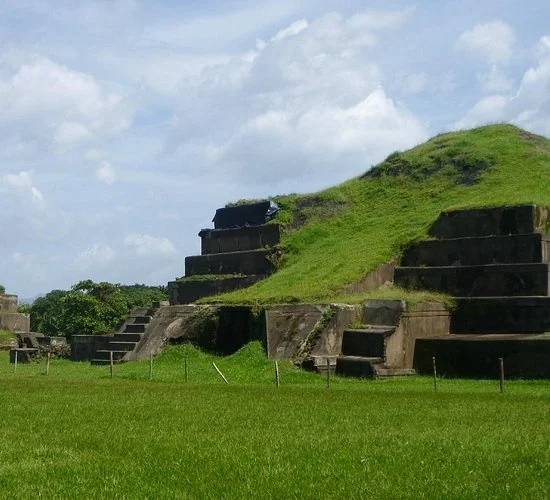
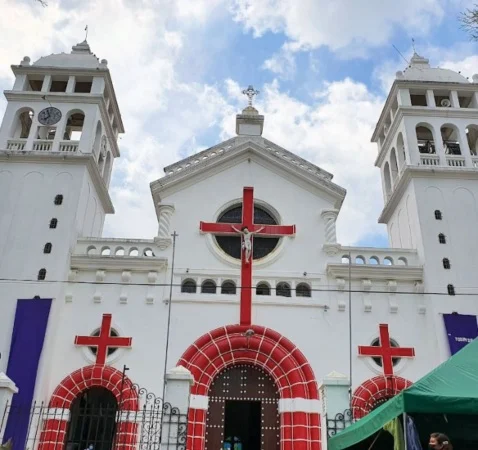
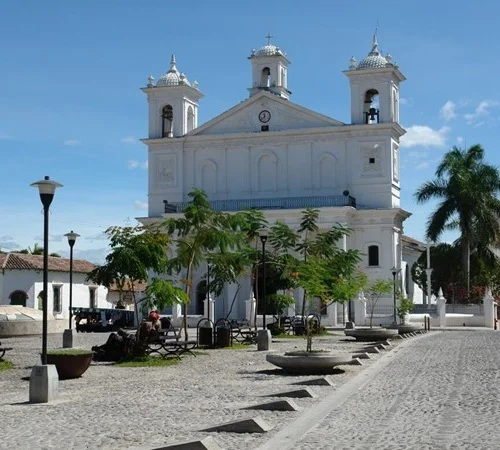


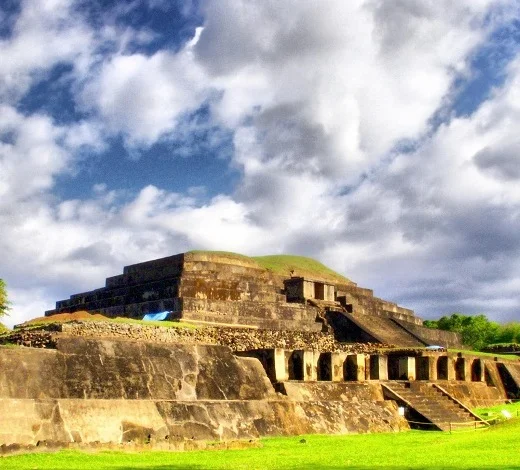
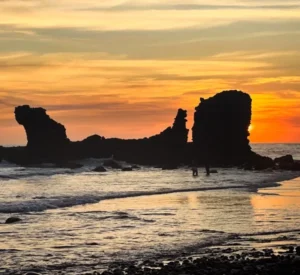
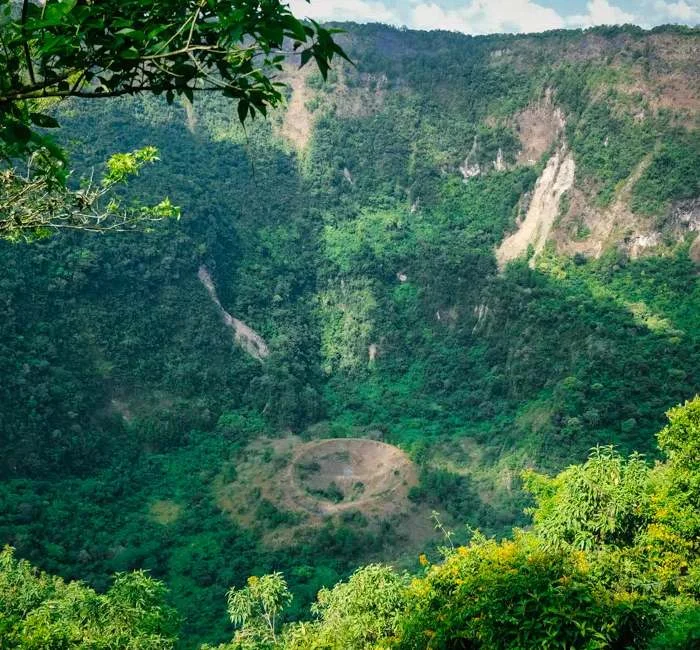
-
Joya de Cerén Often called the “Pompeii of the Americas,” Joya de Cerén preserves a Maya farming village buried under volcanic ash around AD 600. Excavations uncovered homes, granaries and ceremonial plazas—frozen in time by the eruption. Visitors walk raised boardwalks above thatched-roof structures, viewing tools, pottery and kitchen hearths still in place. An on-site museum displays artifacts and models that explain daily life in pre-Columbian El Salvador. The UNESCO World Heritage Site offers guided tours in Spanish and English, highlighting the ingenious agricultural techniques and communal organization of its ancient inhabitants.
-
Ruta de las Flores Winding through cloud-shrouded mountains west of Juayúa, the Ruta de las Flores links five picturesque villages famous for coffee farms, waterfalls and artisan markets. Each town hosts weekend food festivals where local chefs serve roasted coffee beverages and tropical fruit desserts under bougainvillea-draped streets. Birdwatchers track quetzals and toucans in shaded reserves. Hiking trails lead to hidden cascades like Chorros de la Calera, where emerald pools invite a refreshing dip. Colorful murals and hand-loomed textiles adorn municipal buildings, and hospitable hosts open their homes as B&Bs, ensuring an immersive cultural experience.
-
Suchitoto Founded in 1550 on Lake Suchitlán’s northern shore, Suchitoto retains cobblestone streets and colonial—style balconies overlooking flower-lined plazas. Renowned for its cultural scene, the town hosts an annual arts festival featuring music, poetry and theater in restored adobe venues. Boat tours explore the lake’s islands and migratory waterfowl, while nearby Cascada Los Tercios plunges over basalt terraces. Local workshops teach papier-mâché mask making and indigo dye textile weaving. Nightly folk dances in the central park and gourmet restaurants serving pupusas gourmet make Suchitoto a living museum of Salvadoran heritage.
-
Santa Ana Volcano The highest volcano in El Salvador, Santa Ana (Ilamatepec) stands at 2 381 m and offers a challenging 6-hour round-trip hike through pine forests and past fumaroles. At the summit, a jade-green crater lake steams as sulfur gases rise, set against panoramic views of Coatepeque Caldera and Honduran mountains. Trails are well-marked and park rangers provide safety briefings; local guides share stories of indigenous legends connected to the mountain. Cooler air at elevation supports rare orchids and cloud-forest bird species like the emerald toucanet.
-
Lake Coatepeque Formed within a volcanic caldera, Lake Coatepeque’s deep blue waters chill under surrounding forested slopes. Luxury resorts and cliff-side restaurants perch on its rim, offering water-sports—kayaking, paddleboarding and cliff jumping. Thermal springs feed natural spas along its shores, where mud wraps and massages overlook the lake. Scenic viewpoints along the rim road provide sunset panoramas, and cultural events like the annual Lake Food Festival showcase Salvadoran cuisine with fresh lake fish, tropical cocktails and live music.
-
Tazumal Ruins In the heart of Chalchuapa, the Tazumal complex contains the tallest Maya pyramid in El Salvador—originally over 25 m high—surrounded by ball courts and ancient tombs. Excavations revealed jade-adorned burials and ceramic offerings. A small on-site museum displays jade jewelry, incense burners and stone stelae carved with hieroglyphs. Guided walks explain construction phases from AD 300 to 1200 and the site’s role in regional trade networks. Night tours by lantern light evoke the mystical atmosphere of this pre-Columbian metropolis.
-
El Tunco Beach El Tunco’s black volcanic sands and rock-pocked shoreline create legendary surf breaks coveted by surfers worldwide. The reef-protected “Black Stone” break offers consistent swells year-round. At day’s end, beachfront palapas serve cold beers and fresh ceviche while hammock-lined bars host live reggaetón and reggae sessions. Yoga classes on the sand, cliff walks to nearby caves and sea-kayaking into sunset round out the bohemian vibe. Budget hostels and boutique eco-lodges cater to backpackers and wellness retreats alike.
-
El Boquerón National Park Sitting atop the San Salvador Volcano’s crater rim, El Boquerón NP offers easy trails leading to a 1 700 m-wide gorge with two inner craters—Camila and Reina. Mist-shrouded pine and cypress forests line paths with lookout platforms offering sweeping views of the valley below. Ranger-led walks explain the volcano’s geology, native flora like Salvadoran oak and seasonal wildflower blooms. Picnic areas under ancient Ciprés trees invite family outings, while birdwatchers spot orioles and hummingbirds darting among bromeliads.
Transportation
El Salvador’s transport network blends modern highways radiating from San Salvador with rural roads climbing into volcanic highlands. Public buses (“rutas”) traverse fixed routes in cities, while “microbuses” and “coasters” link towns. Ride-hail apps operate in urban centers, and private shuttles serve tourist circuits. Inland mountain roads can be narrow and winding—4×4 vehicles recommended during the rainy season. For short hops, motorcycle taxis (“mototaxis”) offer an economical alternative. Airports connect the country internationally and domestically, while seaports handle small-craft excursions to Pacific islets.
- Bus System: Rocket buses run every 10–15 min on main corridors in San Salvador; ticketing is cash onboard (USD).
- Intercity Coaches: Pullman de El Salvador and San Miguel lines link major cities with air-conditioned coaches.
- Ride-hail & Taxis: Uber and inDrive cover San Salvador; licensed taxis use meters—negotiate flat rates outside cities.
- Shuttles: Private vans shuttle tourists along Ruta de las Flores and to coastal resorts—book through hotels.
- Mototaxis: Helmet-equipped motorcycle taxis serve rural hamlets at low fares but limited to one passenger.
- Car Rentals: Available at airports and city agencies; GPS recommended for secondary roads.
Airports
Two airports provide international access and regional connectivity. Comalapa is the main gateway, while Ilopango handles charters and private flights close to the capital.
- El Salvador Intl. (SAL): ("Comalapa") 50 km south of San Salvador; served by American, United, Iberia, Avianca and low-cost carriers; modern terminal with duty-free, lounges and ground transport.
- Ilopango Intl. (ILS): 8 km east of San Salvador; short runway for private jets, cargo and regional turboprops; undergoing expansion to handle commercial flights.
- Facilities: Car rentals, ATMs, tourist information desks and café outlets at both airports.
- Ground Transport: Shuttle buses, metered taxis and ride-hail pick-ups available 24/7; 45–60 min transfer to city center.
Visa & Travel
| Nationality/Region | Entry Status | Max Stay | Key Requirements |
|---|---|---|---|
| USA, Canada, UK, EU, Australia | Visa Free | Up to 90 days | Valid passport ≥6 months, return/onward ticket |
| Central American (CA-4 Treaty) | Visa Free | Up to 90 days | Valid passport or national ID |
| China, India, Russia, Vietnam | Visa Required | Varies by bilateral agreement | Apply at Salvadoran embassy; proof of funds; itinerary |
| Transit (all nationalities) | Transit Allowed | ≤24 hours | Confirmed onward ticket |
Health: Yellow fever vaccine if arriving from endemic zones; recommended: hepatitis A, typhoid.
Customs: 200 cigarettes or 50 cigars; 1 L alcohol; $500 USD of other goods.
Money Matters: ATMs dispense USD; credit cards accepted in cities; banks open Mon–Fri 08:30–15:30.
Safety Tips: Exercise usual caution; keep valuables secure; avoid poorly lit areas at night.
Etiquette: Greet with handshake and “Buenos días”; dress modestly at religious sites; tipping optional but appreciated.
- Asia
- Singapore
- Japan
- South Korea
- Africa
- Seychelles
- Mauritius
- South Africa
- Contact:
- Address: Eighth Avenue Place, East Tower, 525 8 Avenue SW Suite 3200 Calgary, Alberta T2P 1G.
- Email: Info@theazmip.com
- Number: +12812363495
Travel the World Without the Burden of Visa Applications, as TheAzmip.com Connects You to the Best Visa-Free Destinations.
- North America
- United States
- Canada
- Mexico
- Oceania
- Australia
- New Zealand
- Samoa

